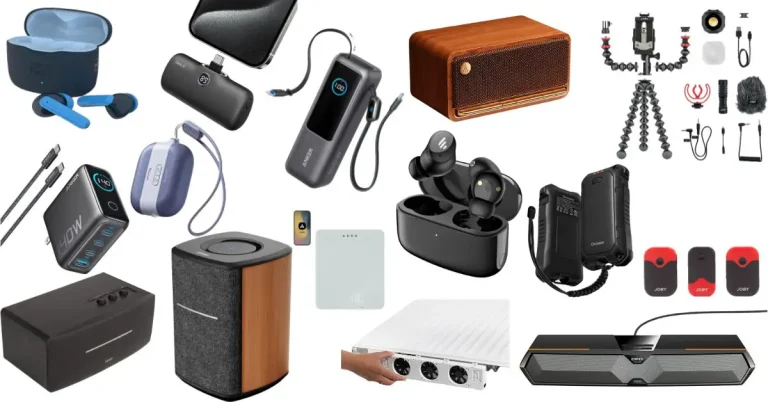Technology is now part of daily life. From phones to smartwatches, we rely on gadgets more than ever. But do we understand their full impact?
To begin with, let’s explore how technology and gadgets in 2025 have transformed how we live. These tools make communication faster, work smoother, and entertainment more accessible.
Gadgets are small electronic devices designed for efficiency. For example, smartphones, laptops, earbuds, and smart home systems each help with specific daily tasks.
When it comes to communication, smartphones allow calls, messages, and video chats globally. Apps like Zoom and WhatsApp make staying in touch easier than before.
Moreover, work and learning have changed. Thanks to laptops and tablets, people can now attend online classes or work remotely. Programs such as Google Docs and Microsoft Teams help teams collaborate effectively.
Health and fitness are also major areas of change. Smartwatches track steps, sleep, and heart rate. In addition, fitness apps help plan workouts and maintain a balanced lifestyle.
For entertainment, technology delivers endless choices. People stream shows on Netflix, listen to music on Spotify, or play games—all from one device.
Importantly, technology and gadgets in 2025 include new trends. Foldable phones, for example, offer a tablet-like experience in your pocket. Similarly, smart glasses combine style with functions like taking photos or showing directions.
AI assistants, like Alexa and Google Assistant, are now smarter. They help manage your schedule, turn on lights, and even answer questions with just a voice command.
Virtual reality (VR) and augmented reality (AR) gadgets let users explore museums, attend concerts, or play immersive games. In fact, learning and fun now happen in the same digital space.
Earbuds with AI can translate languages in real time or adjust sound based on your environment. Clearly, these gadgets have evolved beyond basic listening.
In terms of benefits, the biggest is time-saving. For instance, using smart ovens or voice-to-text apps helps finish tasks faster. Smart homes also automate chores, making life more comfortable.
Additionally, gadgets build connections. With just a phone and internet, anyone can reach others across the world. Whether for business or family, the world feels smaller.
Education has also become more accessible. Through YouTube lessons or apps like Duolingo, people can learn anytime, anywhere. Technology removes barriers to information.
Safety and health monitoring have improved. Smartwatches, for example, alert wearers to health issues early. Meanwhile, security cameras protect homes with ease.
However, there are downsides to consider. Too much screen time affects sleep and focus. Also, sitting for long hours reduces physical activity.
Privacy remains a concern. Some apps collect user data without consent. Moreover, frequent gadget upgrades increase electronic waste, harming the planet.
To use tech wisely, follow simple steps. First, take regular screen breaks. Also, enable blue light filters to protect your eyes. Limit app notifications to reduce stress.
It’s also smart to recycle old devices. Keeping software up to date adds another layer of security.
Looking forward, the future of technology and gadgets in 2025 and beyond seems promising. Smarter AI may handle tasks like shopping or energy control. Likewise, AR and VR will make remote work and learning more immersive.
Healthcare devices may soon monitor vital signs from rings or clothing. These could alert doctors in real time. Furthermore, solar-powered gadgets and recycled parts will reduce tech’s impact on the environment.
Ultimately, gadgets offer convenience, learning, health, and joy. But balance is essential. Use tech to improve your life—not replace it.
Stay curious, be responsible, and enjoy the digital age wisely.

